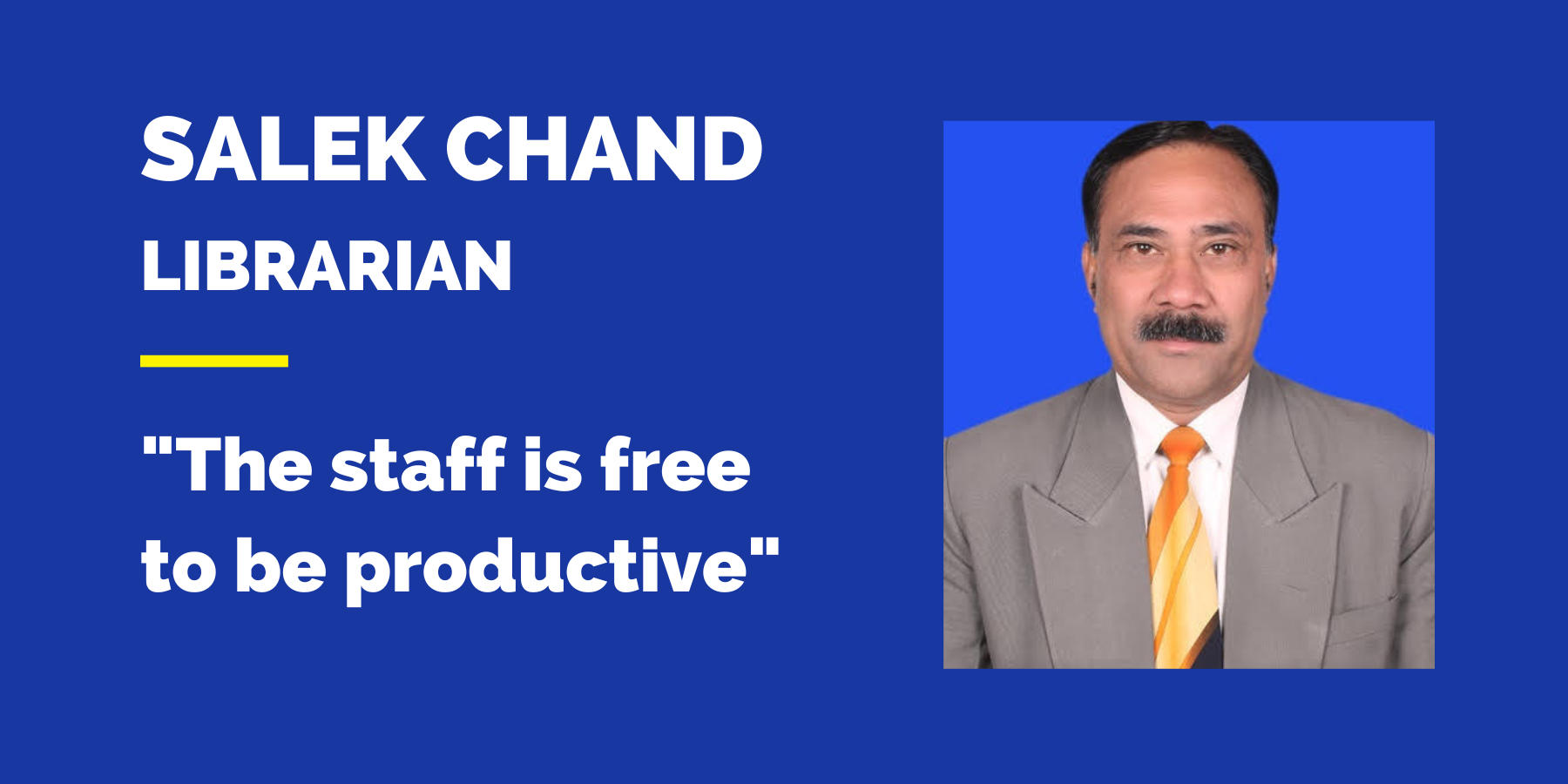First, about me: I have been working as senior documentation officer and head, National Documentation Centre (NDC), National Institute of Health and Family Welfare (NIHFW) in New Delhi for 21 years.
My colleagues and I work to support the Department of Reproductive Biomedicine (RBM) of NIHFW. In turn, it supports a specialized laboratory infrastructure. Researchers here carry out experiments in immunobiology, molecular biology, cell culture, immunodiagnostics and assisted reproduction techniques. They also research steroid hormones, such as progesterone, 11- ketotestosterone, dexamethasone, nandrolone, prednisolone, medroxypregesterone acetate, 17 α-methyltestosterone, etc.
Offering Full Resource Benefits
We leverage the latest web and social media technologies to support our 42 staff members, who include faculty, research staff and students. By offering them access to articles, books and information for the daily activities, the staff is free to be productive.
The members publish 10-12 papers annually in various high-profile domestic and international journals. These researchers are also able to patent contraceptive and assisted human reproduction technologies.
How to Deliver Resources Anytime, Anywhere
With that, here are some of the platforms and methods we use to support the lab staff:
- Online public access catalog (OPAC): We allow users to access bibliographic records collections 24/7.
- Electronic journals: Some are full text, and some contain only bibliographic information with an abstract.
- Online databases: Our library subscribes to various online databases for easy access and use of current information.
- Email: NDC provides needed documents, such as articles or cited references, directly to the patron’s electronic mailbox.
- Short message service (SMS): This is a faster alternative to email, and is much more appealing to younger lab patrons.
- Current awareness service (CAS): Our library uses WhatsApp to deliver CAS to the users’ mobile devices in real time. Library staff can photograph pages of a book or journal (along with the table of contents) and push the images out to users, as needed.
- Selective dissemination of information (SDI): NDC has created electronic user groups (according to different areas of interest) and targets them with specific types of content. For instance, we scan articles and then upload them to a group page for end users to review and download.
- Ask a librarian: Our users can interact with librarians on WhatsApp by asking direct questions or through chat sessions.
- Reference service: Through WhatsApp and email, a reference librarian quickly (and remotely) provides patrons the required information.
- Abstract service: This is a useful platform to deliver abstract info to users on their personal devices.
- Acquisition feedback: NDC uploads/circulates the publisher’s catalog, and users suggest which titles we should procure.
- Reminders/notifications: We can contact many end users simultaneously using WhatsApp. We send pickup notifications, due date reminders, and information on the availability of library materials, as well as provide call numbers and locations.
- Library news blasts: Via WhatsApp and professional platforms (such as LIS links), we broadcast messages about upcoming library events, such as orientation courses.
- Inter-library loan: We obtain books and journals from local libraries for our lab researchers.
- Electronic Resources in Medicine Consortium (ERMED): NDC is an active member and provides free access to this organization’s 243 e-journals.
We intend to keep adding more technologies and services to our patrons to further boost their productivity.

